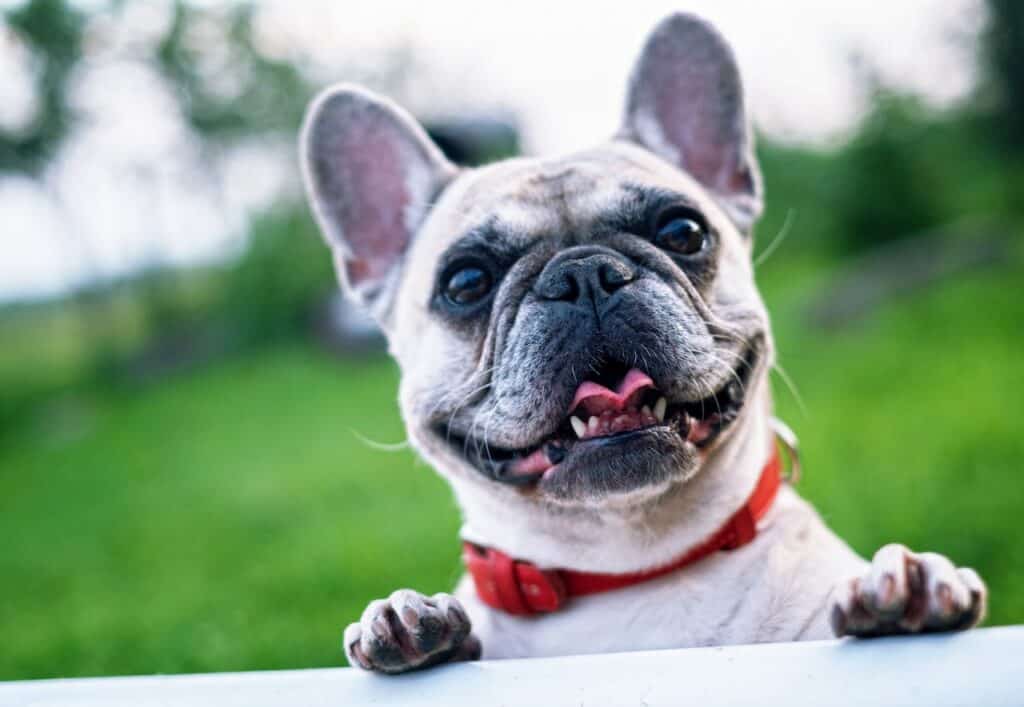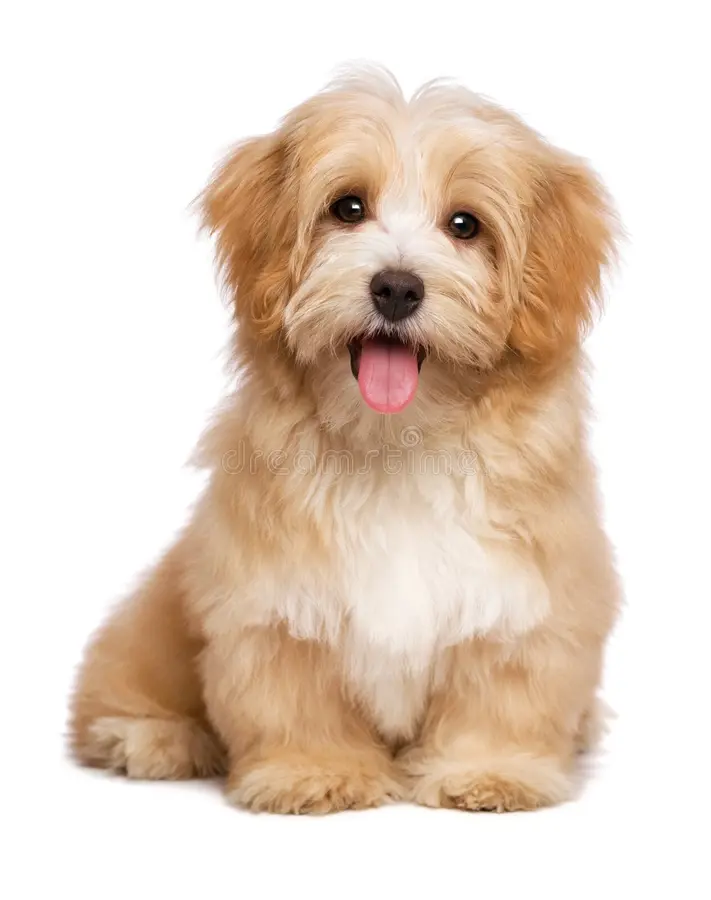Bulldog: A Loyal and Sturdy Companion
1. Introduction
The Bulldog, with its distinct wrinkled face and muscular build, is a breed that’s both easily recognizable and deeply loved worldwide. Often associated with tenacity and strength, the Bulldog’s history and characteristics make it a unique and cherished pet. Originally bred for bull-baiting, these dogs have evolved into gentle, affectionate companions that can fit well into various lifestyles. Bulldogs are known for their calm demeanor, unwavering loyalty, and a certain stubbornness that adds to their charm.
2. Scientific Insights of the Bulldog
Cognitive Abilities and Intelligence
Bulldogs are often perceived as stubborn, which can be mistaken for a lack of intelligence. However, recent research shows that Bulldogs possess a different kind of intelligence—one that focuses on problem-solving and adaptability. Their stubborn nature is actually a sign of independent thinking. A study by the University of Helsinki highlighted that Bulldogs can learn from observing other dogs, a form of social learning previously underestimated in this breed. While they might not rank high in obedience-based intelligence, their problem-solving skills are notably sharp.
Detection Skills and Olfactory Research
Though Bulldogs are not typically used as detection dogs, their olfactory senses are quite developed. Research conducted by the Monell Chemical Senses Center in Philadelphia revealed that Bulldogs have a relatively strong sense of smell compared to other non-hound breeds. Their nasal structure, although shorter, is highly efficient in detecting scents. This capability can be attributed to the large olfactory bulb in their brain, which processes scent information more intensively than expected for a brachycephalic breed.
Behavioral Genetics and Temperament
Bulldogs have a distinct temperament that is influenced by their genetic makeup. According to a study published in “Nature Communications,” Bulldogs have a genetic predisposition towards a calm and non-aggressive demeanor. This is in stark contrast to their ancestors, who were bred for aggression in bull-baiting. The gene responsible for serotonin uptake in Bulldogs is particularly active, contributing to their generally relaxed and laid-back nature. This genetic trait also makes them less likely to exhibit anxiety-related behaviors compared to other breeds.
Role in Medical Therapy and Assistance
Bulldogs have been increasingly used in therapy settings due to their calm nature and strong bond with humans. Their stable temperament and moderate energy levels make them ideal for assisting older adults and individuals with disabilities. A study published in the “Journal of Veterinary Behavior” emphasized that Bulldogs have a unique ability to provide comfort and emotional support, especially in therapeutic environments. Their low energy levels also mean they are less likely to become over-excited, a trait that is beneficial in therapy settings where calmness is essential.
3. History and Origin
Origin of the Bulldog
The Bulldog’s origins trace back to the British Isles, where they were initially bred for bull-baiting—a cruel sport where dogs were set on bulls. The breed’s name “Bulldog” reflects its historical association with this activity. During the 16th century, Bulldogs were bred for their strength, tenacity, and courage. However, as bull-baiting was banned in 1835, the breed’s purpose shifted from fighting to companionship. Over time, breeders focused on reducing the Bulldog’s aggressive traits, transforming them into the affectionate and loyal breed we know today.
Historical Roles and Significance
Throughout history, Bulldogs have held various roles beyond their bull-baiting origins. During the Victorian era, they became symbols of British resilience and determination. The breed’s strong and sturdy appearance made them an emblem of strength, often used in political cartoons and as a national symbol during times of war. Bulldogs were also popular in the United States during the early 20th century, where they became mascots for sports teams and military units, symbolizing tenacity and courage.

4. Physical Characteristics
Size and Weight of the Bulldog
Bulldogs are medium-sized dogs with a distinctive muscular build. Males typically weigh between 50 to 55 pounds (22.5 to 25 kg), while females weigh slightly less, ranging from 40 to 50 pounds (18 to 22.5 kg). Despite their stocky appearance, Bulldogs are quite compact, standing at about 14 to 15 inches (35 to 38 cm) tall at the shoulder. Their weight is well-distributed across their muscular frame, giving them a solid and robust appearance.
Coat Type and Color
The Bulldog’s coat is short, smooth, and lies close to the body. Their coat requires minimal grooming, making them a low-maintenance breed in terms of fur care. Bulldogs come in a variety of colors, including brindle, white, fawn, and piebald. Brindle Bulldogs have a mix of dark and light stripes, while piebald Bulldogs have large patches of two or more colors. The breed standard emphasizes the coat’s smoothness and the richness of color, which adds to their overall striking appearance.
Distinctive Features
One of the most recognizable features of the Bulldog is its face, characterized by a pushed-in nose, deep wrinkles, and a prominent jaw. Their large, round eyes give them a distinctive, soulful expression, often described as sad or concerned, which adds to their charm. The Bulldog’s underbite is another characteristic feature, with the lower jaw protruding slightly beyond the upper jaw. This, combined with their muscular build, gives Bulldogs their unique and iconic look.
Speed and Agility
Bulldogs are not known for their speed, but they are surprisingly agile for their size. They can reach a top speed of approximately 15 miles per hour (24 km/h), though they are not built for long-distance running. Their agility comes into play more in short bursts, such as during play or when responding to commands. Despite their stocky build, Bulldogs can navigate obstacles with relative ease, although their endurance is limited due to their brachycephalic (short-nosed) anatomy, which can make breathing difficult during extended periods of exertion.
5. Types of Bulldogs
English vs. French Bulldogs
When discussing Bulldogs, it’s essential to distinguish between the English Bulldog and the French Bulldog. English Bulldogs are larger, with a more pronounced muscular build and a more severe facial expression. They are known for their loyalty and protective nature. On the other hand, French Bulldogs are smaller, with a more playful and alert demeanor. They have large, bat-like ears and are known for being more energetic than their English counterparts. Both breeds share the Bulldog’s signature loyalty and affectionate nature but differ significantly in size, appearance, and temperament.
Working Line vs. Show Line
Bulldogs can also be categorized into working line and show line breeds. Working line Bulldogs are bred for their functional attributes, such as strength and endurance. These Bulldogs are often more muscular and agile, reflecting their historical role as working dogs. Show line Bulldogs, in contrast, are bred for their appearance, conforming to breed standards set by kennel clubs. These Bulldogs often have a more pronounced underbite, larger heads, and more defined wrinkles. While both types share the same core traits, their physical characteristics and temperaments can differ based on their breeding focus.
Long-Haired vs. Short-Haired
While the traditional Bulldog is short-haired, there have been instances of long-haired Bulldogs, though these are rare and not recognized by official breed standards. Long-haired Bulldogs result from a recessive gene and typically have a slightly softer coat with longer fur around the ears and neck. However, these Bulldogs are not considered standard and are rarely seen in breeding programs. Short-haired Bulldogs remain the norm, with their smooth, low-maintenance coats being one of the breed’s defining features.
6. Temperament and Personality
General Behavior and Traits of the Bulldog
Bulldogs are known for their calm and friendly demeanor. Despite their fierce appearance, they are generally gentle and affectionate, particularly with their families. Bulldogs are also known for their stubbornness, which can make training a challenge. However, their stubborn nature is often paired with a deep loyalty to their owners, making them excellent companions. They are typically not aggressive, though they can be protective if they perceive a threat to their loved ones.
Interaction with Family, Children, and Other Pets
Bulldogs are excellent family pets and are particularly good with children. Their gentle nature and patience make them well-suited for families with young kids. Bulldogs are also generally good with other pets, particularly if they are socialized from a young age. They can be somewhat reserved with strangers, but they usually warm up quickly once they sense that there is no threat. Their protective nature means they may be wary of unfamiliar dogs, but proper socialization can mitigate this behavior.
Socialization Needs
Like all breeds, Bulldogs require socialization to ensure they are well-behaved and confident. Early exposure to different people, environments, and other animals is crucial. Bulldogs are naturally inclined to be protective, so socialization helps them distinguish between real threats and harmless situations. Regular social interaction is also essential for preventing behavioral issues such as anxiety and aggression. Despite their independent nature, Bulldogs thrive on companionship and should not be left alone for extended periods.
7. Health and Common Diseases
Typical Lifespan of the Bulldog
The average lifespan of a Bulldog is between 8 to 10 years, though with proper care, some Bulldogs can live longer. Their lifespan is relatively short compared to other breeds, primarily due to the health issues associated with their brachycephalic anatomy. Regular veterinary check-ups and a healthy lifestyle can help extend a Bulldog’s life expectancy.
Common Health Issues and Genetic Conditions
Bulldogs are prone to several health issues, many of which are related to their unique physical characteristics. Brachycephalic obstructive airway syndrome (BOAS) is a common condition in Bulldogs, caused by their short noses and narrow airways, leading to breathing difficulties. They are also susceptible to hip dysplasia, a genetic condition that affects the hip joints and
can cause pain and mobility issues. Bulldogs are prone to skin conditions, particularly in the folds of their skin, which can become irritated or infected if not properly cared for. Regular veterinary care and a healthy diet are essential to managing these health issues.
8. Care and Grooming
Grooming Needs of the Bulldog
Despite their short coat, Bulldogs require regular grooming to keep their skin healthy. Their wrinkles need to be cleaned frequently to prevent infections, and their short coat should be brushed weekly to remove loose hair and keep their skin in good condition. Bulldogs are prone to drooling, so wiping their face regularly is necessary to prevent skin irritation. Regular nail trimming, ear cleaning, and dental care are also important aspects of Bulldog grooming.
Exercise Requirements
Bulldogs have moderate exercise needs. While they enjoy short walks and playtime, they are not high-energy dogs and are prone to overheating due to their brachycephalic anatomy. It’s essential to provide them with regular, moderate exercise to keep them healthy without overexerting them. Activities should be tailored to their capabilities, with an emphasis on short, controlled sessions rather than prolonged, intense exercise.
9. Hypoallergenic Status
Bulldogs are not hypoallergenic. They shed a moderate amount and produce dander, which can trigger allergies in sensitive individuals. Their drooling can also contribute to allergen levels in the home. If you or a family member have allergies, it’s important to spend time with a Bulldog before bringing one into your home to ensure compatibility.

10. Nutrition Requirements
Dietary Needs of the Bulldog
Bulldogs require a balanced diet that supports their muscular build while preventing obesity. Due to their susceptibility to weight gain, it’s crucial to monitor their calorie intake and ensure they receive high-quality, nutrient-dense food. A diet rich in proteins, healthy fats, and essential vitamins and minerals is ideal. Bulldogs also benefit from joint supplements, such as glucosamine and chondroitin, which can help prevent or manage hip dysplasia and other joint-related issues.
Recommended Food and Supplements
High-quality commercial dog food formulated for Bulldogs or similar breeds is recommended. Look for foods that contain real meat as the first ingredient and avoid fillers like corn and soy. Supplements such as fish oil can help maintain healthy skin and coat, while probiotics support digestive health. Always consult with your veterinarian before introducing any new supplements to your Bulldog’s diet.
11. Training and Obedience
Trainability of the Bulldog
Training a Bulldog can be a challenging yet rewarding experience. Bulldogs are intelligent but have a stubborn streak that can make obedience training difficult. Positive reinforcement methods, such as treats and praise, are most effective. It’s important to be patient and consistent, as Bulldogs respond best to gentle, yet firm training. Socialization should start early, and obedience training should focus on basic commands and good manners.
Common Training Techniques
Using a combination of positive reinforcement and short, engaging training sessions is key to training a Bulldog. Clicker training can be particularly effective, as it allows for precise communication and rewards. Due to their short attention span, training sessions should be brief but frequent. Consistency is crucial, as Bulldogs need clear boundaries and expectations to thrive.
Tips for Successful Training
Start training early, ideally when your Bulldog is still a puppy. Keep sessions short and positive, focusing on one command at a time. Bulldogs can be sensitive to harsh treatment, so always use positive reinforcement and avoid punishment. Be patient and persistent—Bulldogs may take longer to learn certain commands, but with consistency, they will eventually succeed.
12. Work and Activities
Activities or Jobs that the Bulldog Excels In
While Bulldogs are not typically associated with working roles, they can excel in specific activities that match their temperament and physical abilities. Bulldogs can do well in therapy work, providing comfort and companionship to those in need. They also enjoy participating in obedience and rally competitions, where their stubbornness can be turned into determination. Although they are not built for endurance sports, Bulldogs can enjoy short, controlled play sessions and activities that challenge their mind.
Examples of Competitive Sports, Therapy Work, and Search and Rescue
Bulldogs have been successfully trained for therapy work, where their calm demeanor and affectionate nature make them ideal candidates. They are often used in hospitals, nursing homes, and schools to provide emotional support. Bulldogs can also participate in obedience trials, where their ability to learn commands and perform tasks is tested. While they are not typically used in search and rescue due to their physical limitations, they can excel in scent work or tracking activities in controlled environments.
13. Behavioral Issues
Common Behavioral Issues
Bulldogs, like all breeds, can develop behavioral issues if not properly trained and socialized. Common issues include stubbornness, which can manifest as resistance to commands or reluctance to participate in activities. Bulldogs may also develop separation anxiety if left alone for long periods. Due to their protective nature, some Bulldogs may exhibit territorial aggression, particularly towards other dogs or strangers.
Managing and Correcting Behavioral Problems
To manage stubbornness, it’s important to establish clear boundaries and use positive reinforcement consistently. Avoid confrontational training methods, as they can exacerbate stubborn behavior. For separation anxiety, gradually acclimate your Bulldog to being alone by starting with short absences and gradually increasing the time. Providing a comfortable space with toys and treats can also help. Territorial aggression can be mitigated through early socialization and controlled introductions to new dogs and people.
14. Ideal Owners and Families
Type of Owners Best Suited for the Bulldog
Bulldogs are best suited for owners who can provide a calm and stable environment. They thrive in households where they are treated as part of the family and given plenty of attention and affection. Bulldogs are not ideal for highly active individuals or families looking for a high-energy dog. Instead, they are perfect for those who enjoy a more relaxed lifestyle and can accommodate the Bulldog’s moderate exercise needs and occasional stubbornness.
Compatibility with Families, Singles, Older Adults, etc.
Bulldogs are highly adaptable and can fit well into various household types. They are great with families, including those with young children, due to their gentle nature. Bulldogs are also an excellent choice for singles or older adults, as they do not require excessive exercise and are content to spend time lounging around the house. Their loyalty and protective instincts make them wonderful companions for anyone looking for a devoted pet.
Living Conditions
Bulldogs are well-suited to both apartment living and homes with yards, provided they receive regular exercise and mental stimulation. Due to their brachycephalic nature, Bulldogs are sensitive to extreme temperatures, particularly heat. It’s essential to provide a cool, comfortable living environment and avoid strenuous activity during hot weather. Bulldogs do best in homes where they can be close to their family members and not left alone for extended periods.
15. Adaptability
Adaptability to Different Environments
Bulldogs are relatively adaptable to different living environments, as long as their basic needs are met. They can adjust to life in an apartment, provided they receive regular walks and mental stimulation. Bulldogs can also adapt to suburban or rural settings, although they should always be supervised outdoors due to their tendency to overheat and their limited endurance. With proper care, Bulldogs can thrive in various environments.
Adjustments to Lifestyle Changes
Bulldogs can handle lifestyle changes, such as moving to a new home or the arrival of a new family member, with proper preparation and gradual introductions. However, they are creatures of habit and may take time to adjust to significant changes. Maintaining a consistent routine and providing extra attention during transitions can help Bulldogs adapt more smoothly. Their loyal and affectionate nature means they will often take cues from their owners, making them more resilient to change when they feel secure and loved.

16. Famous Bulldogs
Notable Bulldogs in History, Movies, or Public Life
Bulldogs have made their mark in history and popular culture, often symbolizing resilience and strength. Perhaps the most famous Bulldog in history is Winston Churchill’s Bulldog, who became a symbol of British courage during World War II. Bulldogs have also appeared in numerous films and TV shows, often playing roles that emphasize their tenacity and charm. One notable Bulldog in popular culture is Spike from the “Tom and Jerry” cartoons, known for his protective nature and distinctive growl. Bulldogs are also popular as mascots for sports teams, including the University of Georgia’s Uga, who has become a beloved figure in college football.
17. Summary
Bulldogs are a unique breed with a rich history and a distinct set of characteristics that make them wonderful companions. Their loyalty, calm demeanor, and distinctive appearance have made them a favorite among dog lovers worldwide. While they have specific needs in terms of health and care, the rewards of owning a Bulldog are immense. Whether as a family pet, a therapy dog, or a loyal companion, Bulldogs bring joy and comfort to those lucky enough to share their lives with them. Their adaptability, combined with their protective yet gentle nature, makes them ideal for various living situations. In summary, Bulldogs are a breed that offers much love and loyalty, making them a perfect addition to many homes.
This article is brought to you by Our World of Dogs. Explore more dog breeds and find out how our dog boarding services can benefit your furry friend!



